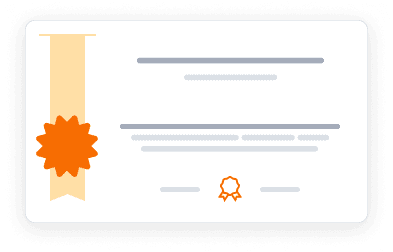This course is part of Chemical Hazards and Process Safety.
This course cannot be purchased separately - to access the complete learning experience, graded assignments, and earn certificates, you'll need to enroll in the full Chemical Hazards and Process Safety Specialization program. You can audit this specific course for free to explore the content, which includes access to course materials and lectures. This allows you to learn at your own pace without any financial commitment.
4.8
(55 ratings)
3,616 already enrolled
Instructors:
English
22 languages available
What you'll learn
Characterize flammability of gases, liquids, and mixtures
Construct and interpret flammability diagrams
Estimate damage potential from chemical explosions
Implement fire and explosion prevention strategies
Design effective pressure relief systems
Skills you'll gain
This course includes:
2.5 Hours PreRecorded video
4 assignments
Access on Mobile, Tablet, Desktop
FullTime access
Shareable certificate
Get a Completion Certificate
Share your certificate with prospective employers and your professional network on LinkedIn.
Created by
Provided by

Top companies offer this course to their employees
Top companies provide this course to enhance their employees' skills, ensuring they excel in handling complex projects and drive organizational success.





There are 4 modules in this course
This comprehensive course focuses on analyzing and managing fire and explosion hazards in chemical processes. Students learn to characterize flammability of gases and liquids, construct flammability diagrams, and estimate explosion damage using the TNT equivalency method. The curriculum covers critical topics including inerting procedures, static electricity hazards, and pressure relief systems. Through case studies and practical assignments, participants develop essential skills in preventing and controlling industrial fire and explosion risks.
Getting Started & Characterizing Flammability
Module 1 · 2 Hours to complete
Flammability Diagrams
Module 2 · 1 Hours to complete
Explosions
Module 3 · 2 Hours to complete
Pressure Relief
Module 4 · 1 Hours to complete
Fee Structure
Individual course purchase is not available - to enroll in this course with a certificate, you need to purchase the complete Professional Certificate Course. For enrollment and detailed fee structure, visit the following: Chemical Hazards and Process Safety
Instructor
Associate Professor of Chemical Engineering
Dr. Jason R. White is an Associate Professor of Teaching in the Department of Chemical Engineering at the University of California, Davis. He has been a faculty member at UC Davis since 2015 after earning his Ph.D. from the University of Connecticut. Dr. White specializes in teaching courses related to chemical process design, process safety, and bioseparations, and he has received multiple accolades, including being voted "Professor of the Year" by his students on three occasions. His innovative teaching methods were recognized with a "Best Poster Award" at the 2019 American Society for Engineering Education conference for his work on enhancing student engagement through active learning strategies.A strong advocate for process safety education, Dr. White has significantly improved the curriculum at UC Davis by incorporating insights gained from participating in a process safety bootcamp hosted by the Center for Chemical Process Safety. He also played a key role in establishing the CHEM E CAD and Industrial Automation club, focusing on project-based learning experiences that prepare students for real-world challenges in chemical engineering. Outside of academia, Dr. White enjoys spending time with his wife and their six children, as well as engaging in sustainable agricultural practices on their homestead in Auburn, CA.
Testimonials
Testimonials and success stories are a testament to the quality of this program and its impact on your career and learning journey. Be the first to help others make an informed decision by sharing your review of the course.
Frequently asked questions
Below are some of the most commonly asked questions about this course. We aim to provide clear and concise answers to help you better understand the course content, structure, and any other relevant information. If you have any additional questions or if your question is not listed here, please don't hesitate to reach out to our support team for further assistance.



